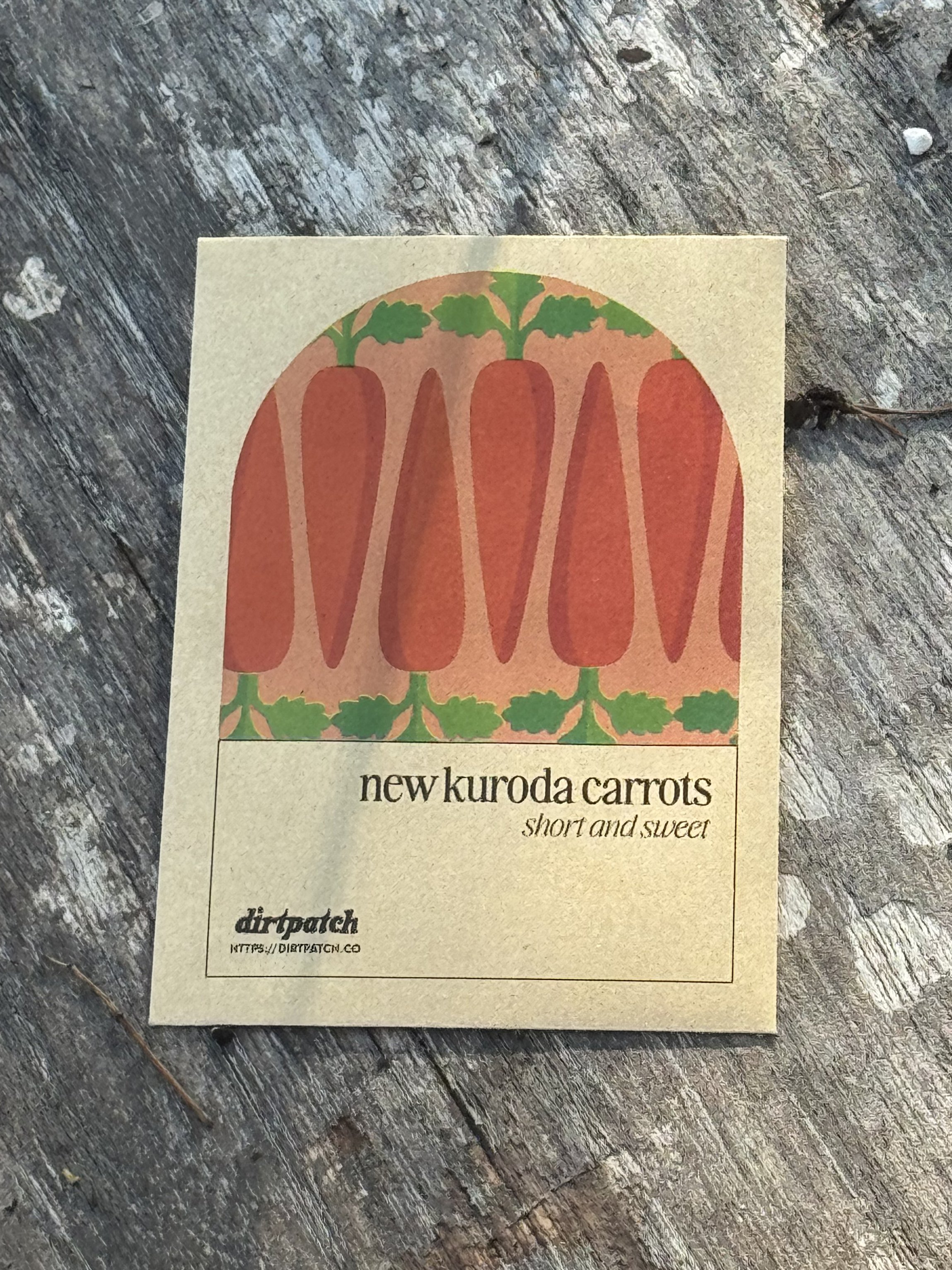Growing Instructions
Carrots are typically a cool-season crop, but Kuroda expands that window by performing well even in warm conditions. It can be planted in spring and again in summer for a fall harvest. This variety needs full sun to partial sun shade to thrive. Sow seeds in loose, well-draining soil with plenty of organic matter. Sow at a depth of 1/8" and spaced 1"-2" in rows or broadcast over a bed, then cover lightly with soil. Kuroda’s shorter, thicker roots mean it can tolerate heavier soil better than many carrots, but you’ll still get the straightest roots in loosened soil at least 8"–10" deep. Carrot seeds are tiny and prefer to be kept consistently moist during their 7-14 day germination period. Regular watering through the growth period is important since uneven moisture can cause the roots to crack.
Harvest, Storage, and Use
Kuroda carrots will mature roughly 85–100 days from sowing. The tops of the carrots will often show at the soil line when they are mature diameter, giving you a peek at their readiness. To harvest, loosen the soil around the carrots then gently pull by the tops. Kuroda’s thick, blunt-tipped roots come out best from moist soil so watering the area the day before can make the job easier. After harvesting, cut off the leafy tops as soon as possible since they draw moisture and can cause the carrots to go limp if left on. Kuroda carrots store well. You can pack them in plastic bags in the refrigerator and can last for months. You can also blanch and freeze sliced or diced carrots for longer storage.
Kuroda carrots' sweetness makes them perfect for eating raw. They also shine in juices. Try mixing up a carrot-orange-ginger juice. Kuroda carrots hold texture well when cooking so you can roast them sliced, stir them into a stew, or glaze them on the stovetop. They even make superb carrot cakes and muffins thanks to their natural sugar content.
| 👍 Good companions | Onions, leeks, marigolds, nasturtiums, cilantro, leeks, garlic, chives, rosemary, sage (repel pests), radishes (help break up soil), legumes like beans and peas (enrich the soil with nitrogen for nutrient-hungry carrots), beets (compatible root patterns), lettuce (shallow-rooted so no competition) | ||
| 👎 Bad companions | Dill, fennel (stunt growth), parsnips (share pests and nutrient needs), and large root crops like turnips/rutabagas or potatoes (competition in the root zone) | ||
| Growing zones | 5-10 | Crop type | Annual |
| Crop difficulty | Easy | Seed type | Heirloom |
| Sowing method | Direct Sow | Containers? | Large / Bed |
| Sun req. | Full Sun | Ideal soil temp. | 60-80°F |
| Days to germination | 7-14 days | Days to maturity | 70-90 days |
| Seed spacing | 1"-2" (thin to 2-3") | Row spacing | 12" |
| Seed depth | 1/8" | Needs support? | No |


